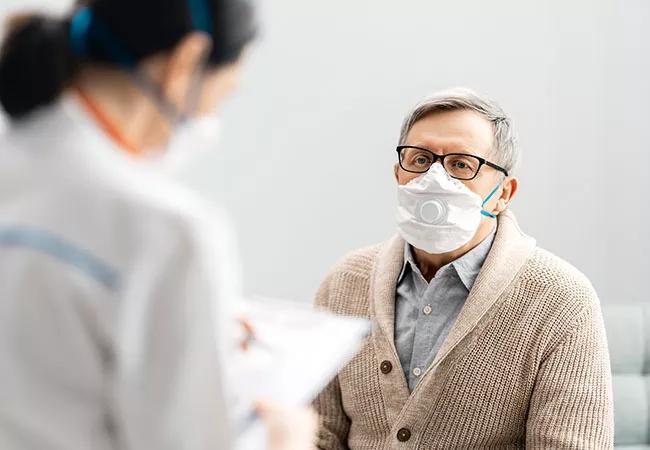Study examines the relationship between outcomes and delay

Understanding the effect of delayed treatment on patient outcomes — particularly in high-grade prostate cancer — is of growing interest to patients and clinicians. Findings from a new study show that time-to-treatment, at least in the short term, is not significantly associated with adverse outcomes in patients with high-risk prostate cancer. The results were published in BJU International.
Advertisement
Cleveland Clinic is a non-profit academic medical center. Advertising on our site helps support our mission. We do not endorse non-Cleveland Clinic products or services. Policy
An expectation for high-grade prostate cancer, which makes up about 10% of all prostate malignancies, is that earlier treatment is always better. Findings from the study suggest that delays of up to 12 weeks do not affect outcomes, however.
Eric Klein, MD, Chair of the Glickman Urological and Kidney Institute and a co-author of the study, says this should be encouraging to patients and physicians in cases when a delay in treatment is warranted.
“Treatment may be delayed for a variety of reasons. It could be related to treatment toxicity or a crisis situation, such as with the COVID-19 pandemic. A patient may want a second opinion, or be a good candidate for neoadjuvant trials,” says Dr. Klein. “Understandably, there may be some hesitation among newly diagnosed patients about delaying surgery, even if it’s because they are receiving other anticancer treatment.”
The backdrop of this study is the understanding that multimodality approaches are necessary to treat aggressive prostate cancer. In recent years, researchers and clinicians have made novel discoveries about the molecular basis of prostate cancer and the development of new therapeutic agents. Neoadjuvant trials, or those happening before surgery, provide an opportunity to learn more about a patient’s cancer to inform treatment pathways and efficacy.
“This study opens the door for greater opportunities to explore neoadjuvant therapies for high-risk disease so that we can continue to improve care,” says Dr. Klein.
The study examined 1776 patients across three different centers with high-risk or very high-high (VHR) prostate cancer who underwent radical prostatectomy from 2005 to 2015. The high-risk cohort included those with a PSA level of > 20 ng/mL, a biopsy with a Gleason sum of 8-10 or clinical stage T3-4. The VHR cohort included those with a primary biopsy Gleason pattern 5, more than four biopsies with a Gleason sum of 8-10, or two or more high-risk features.
Advertisement
The primary goals were to analyze biochemical recurrence, metastasis, prostate cancer-specific mortality and all-cause mortality in patients who underwent radical prostatectomy. Time-to-treatment was grouped according to patients who received surgery within 8 weeks, 8-12 weeks, and 12 or more weeks after biopsy. The median age and PSA level were 62 (range, 57-67) years and 7.0 (range, 4.9–13.0) ng/mL, respectively. The median time from biopsy to surgery was 67 (50-91) days. Patients were followed for a median of 31 (range, 12.2-55.8) months.
The study authors concluded that outcomes, including recurrence and mortality, were not significantly associated with time-to-treatment — this was consistent in both high-risk and VHR cohorts. Dr. Klein remarks that the study findings were not surprising, but they were reassuring.
“Patients are understandably scared when they learn they have high-grade cancer. But what we have seen anecdotally — and what these data suggest — is that a reasonable delay in treatment is not likely to affect outcomes in these patients. In fact, if it’s because of their enrollment in a promising drug trial, it might actually serve them better.”
Advertisement
Advertisement

Large retrospective study suggests DOACs are safe, effective alternative to low-molecular-weight heparin in complex patient population

Care paths and research initiatives aim to answer unmet clinical needs

Study shows high rate of hematologic responses, low rate of disease progression

Bispecific antibody bridging therapy deepens durability of BCMA CAR T-cell therapy without overlapping toxicities in patients with relapsed/refractory multiple myeloma

Phase 2 study brings pivotal advances in treatment efficacy and safety for the most challenging-to-treat population

Patient with quadruple refractory multiple myeloma achieves complete response with cell therapy

Distinct baseline immune profiles can predict response and resistance to different types of CAR-T cells.

National Blood Clot Alliance collaborates with faith-based organizations on first-of-its-kind church bus tour